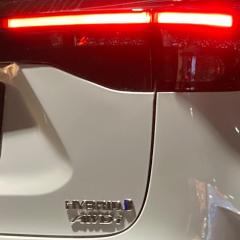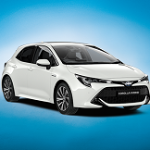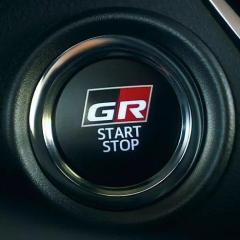Leaderboard
Popular Content
Showing content with the highest reputation since 06/28/2021 in Tutorials
-
This tutorial is used to learn about all the settings that can be made in the information system of the Corolla MY23 InstructionManual_Toyota_DisplayCockpit.pdf2 points
-
Devon Aygo has recently supplied the following information on oil requirements: "The issues over which oils are used is caused by a European law called "Block exemption" the same law that states that manufacturers can't insist on main dealer servicing, also stops Toyota from insisting what oils are used by anyone wishing to service a car including their own dealer network. All Toyota are allowed to do is list a set of specifications that the oil used must meet they can also list a "preferred" oil. For example I have listed below the requirements Toyota have for the mkiii Prius, a car that has caused a lot of posts over the oils that have been used during servicing. This info is taken from Toyota's Service data sheet for European Prius mkiii only! Preferred option: 0w20 Other listed options: 5w20 5w30 10w30 15w40 20w50 These grades above are listed by Toyota as they meet the following required specifications: API grade SL or SM multigrade engine oil API grade SL “Energy-Conserving”. SM “Energy-Conserving” or ILSAC* multigrade engine oil. Toyota can only require the oils used meet the minimum specifications above. So long a the oil used meets the above the oil grade is not enforceable. At present Toyota have "asked" but cannot enforce the dealer network to use the following, MK4 Yaris & Yaris Cross 0W8 - Meeting JASO GLV-1 New Models introduced in 2019 such as Corolla Hybrid, Rav4 Hybrid, C-HR Hybrid & Facelift Prius & Aygo use 0w16 - Meeting API SN Auris, C-HR & Corolla 1.2T 0w20 AFE Extra - Meeting API SN Plus / ILSAC GF-5 2019 Supra 0w20 ( there is a Supra Specific grade for this ) - Meeting API SN ACEA C5 GR Yaris 4wd 0w20 AFE Extra - Meeting API SN Plus / ILSAC GF-5 MK3 Prius, Prius plug-in, Prius +, Mk1 Auris HSD, Mk2 Auris HSD, MK3 Yaris HSD & C-HR HSD >2019 0w20 - Meeting API SN / ILSAC GF-5 Mk1 & Mk2 Prius 5w30 - Meeting API SN ACEA C2 Optimal drive petrol models 0w20 - Meeting API SN Plus / ILSAC GF-5 Other petrol engines 5w30 - Meeting API SN ACEA C2 Diesel engines incl Optimal drive 5w30 - Meeting API SN ACEA C2 Diesel engines with DPF/DPNR including optimal drive 0w30 or 5w30 - Meeting API SN ACEA C2 1.6 1WW Auris, Avensis & Verso & 2.0 2WW Avensis & Rav4 ( BMW ) 5w30 meeting API SN ACEA C3 BMW LL04 1.5, 1.6 & 2.0 Proace & Proace City ( PSA ) 5w30 meeting ACEA C2 PSA B71 2312 2022 on Hilux 2.4/2.8 GD engine 0W20 PFE - Meeting ACEA C52 points
-
This post is designed to give a basic overview of modern Toyota Diesel engines and their commonly troublesome components: How does a Diesel engine work? Firstly Diesel is not as flammable as Petrol. Diesel engines don’t have spark plugs to ignite the fuel, but to bring about combustion they require heat. If you put your finger over the end of a foot pump and pump it, your finger will become hot. This is due to compression of the air trapped inside the pump (the air molecules have less space to move about and collide with each other more frequently causing energy to be given off in the form of heat). The same thing happens in a diesel engine: as the piston moves upwards, the air trapped inside is compressed, causing it to heat up (the temperature reached is circa 400 degrees C). Just before the piston reaches the top of its' stroke, the pump and injectors spray a very fine mist of diesel into the piston chamber. The intense heat of the trapped air in the piston causes the diesel to ignite, forcing the piston down and producing the power stroke which goes through the engine via the gearbox / wheels etc etc and off you go. What are Glow Plugs? When internal sensors detect that the core of the engine block has reached a certain designated temperature, or when a certain amount of time elapses, the glowplug relay switches off the "wait-to-start" light. A pre-heating cycle usually lasts for 2 to 5 seconds. The driver then turns the key to the "start" position. The glowplug relay switches off the glowplugs after the engine is running. In some newer cars, glow plugs continue to operate for up to 180 seconds after engine start to keep the engine within emissions regulations, as combustion efficiency is greatly reduced when the engine is very cold. Link http://en.wikipedia.org/wiki/Glowplug As glow plugs wear out the vehicle will be more difficult to start, run poorly and produce a white/bluey smoke. Glow Plugs are a reasonably cheap to replace. What is D4D? D4D is Toyota’s version of Common Rail Diesel. The term "common rail" refers to the fact that all of the fuel injectors are supplied by a common fuel rail which is nothing more than a pressure accumulator where the fuel is stored at high pressure. This accumulator supplies multiple fuel injectors with high pressure fuel. Modern common rail systems, are governed by an engine control unit (ECU) which opens each injector electronically rather than mechanically. What are Injectors? Fuel injectors are a key part of modern automotive systems, as they're responsible for getting fuel into the engine in a precise, orderly and carefully engineered pattern. Unfortunately, the conditions we drive in are not ideal. Pollution is in the air, and fuel can be contaminated with water, dirt particles and other debris. Regularly changing your fuel filter (according to change interval in your service book) will help keep debris from circulating. You can also add fuel injector cleaner to your fuel tank, which may help solve running issues. Doing this at regular intervals of 10,000 miles or so might provide more cleansing than your engine actually needs, but it shouldn’t harm the system. Injector Cleaner can't improve your car beyond its original factory spec. When injectors fail there are generally two approaches to repair, take the vehicle to a main dealer and have the whole set (£1000+) replaced or find a diesel specialist who may be able to replace or repair individual injectors (circa £250 each) after testing. Fuel Injector problem symptoms include, poor starting, rough running, loss of power, black or white smoke. It is generally known that injectors will need attention after 100,000 miles. What is a Turbo? Turbochargers are a type of forced induction system. They compress the air flowing into the engine. The advantage of compressing the air is that it lets the engine squeeze more air into a cylinder, and more air means that more fuel can be added. Therefore, you get more power from each explosion in each cylinder. A turbocharged engine produces more power overall than the same engine without the turbocharging. When Turbo’s are failing they will typically cause the car to have a loss of power, excessive smoke and in some cases a high pitched whine. Turbo’s can often be repaired bya turbo specialists or replaced with a new unit, obviously a repair is cheaper. What is an SCV? SCV's (Suction Control Valves) are used in Common Rail diesel engines to control the pressure of the fuel in the accumulator. The pressure is varied by the ECU by controlling how much fuel the pump feeds into the accumulator, replacing the fuel as it is delivered into the engine by the injectors. Low pressure for the injectors at idle, high pressure at maximum power. Electrically operated, SCVs can need to open and close at up to 200 times per second and if they stick or fail to open properly then poor running, starting and power loss can occur. Sticking when hot is often cited as a cause of hot starting problems. D4D pumps may have one or two of these valves depending on the type of pump fitted, this is important when ordering the correct parts. Vehicles commonly affected by this have the 1CD-FTV 2.0 D4D Engine 2000-2005, found on RAV4/Avensis/Corolla built between these dates. This article SCV's on the RAV4 Forum provides an overview of the location and parts on a two valve pump. These parts are typically £250 to replace + fitting if required. What is an EGR Valve? Exhaust gas recirculation (EGR) is a nitrogen oxide (NOx) emissions reduction technique used in modern engines, EGR works by recirculating a portion of an engine's exhaust gas back to the engine cylinders. After a while the gases containing dirty, sooty carbons start to cover and coat the intake area and valves causing the air to fuel ratio to become unbalanced thus resulting in more black smoke being emitted from the exhaust. This black smoke is then drawn back into the air intake via the EGR valve. A vicious cycle then starts with the engine producing more smoke and sootier carbons being drawn into the intake, a major problem. Symptoms of EGR issues include lack of power, engine hesitancy and then a surge of power followed by black sooty smoke. A fall in fuel economy may also occur. On most Toyota engines the valve is easily removed and cleaned, a dealer will charge an hours labour to do the same job. If the valve fails it will cost around £300 to be supplied and fitted by Mr T. If the vehicle is used continually then carbon clogging could eventually lead to head gasket failure on AD engines, please review the attached document to see if your car has one of these engines.AD Head Gaskets.pdf A simple method of trying to keep the EGR valve clean is to drive the vehicle (once warm) hard by bringing the revs near to the red line, this will result in black soot leaving the exhaust, continue this until the soot no longer appears. This should be a weekly event. This is also known as an Italian Tune Up. Personally as my 2.2 D4D Verso is out of warranty i clean the EGR every 10k, this a superb guide http://www.toyotaown...howtopic=106241 What is D-Cat? D-CAT (Diesel Clean Advanced Technology) is Toyota’s version of a diesel particulate filter (DPF) which is a device designed to remove soot from the exhaust gas of a diesel engine. The soot created by the engine is burnt off during the regeneration process, this process uses fuel which is added by an additional injector, this additional fuel usage reduces MPG when compared with vehicles that dont have a DPF. The regeneration process occurs at road speeds higher than can generally be attained during urban usage ,vehicles driven exclusively at low speeds in urban traffic will require periodic trips at higher speeds to clean out the DPF. On cars with a very high sixth gear the engine revs may be too low to generate sufficient exhaust temperature for regeneration. Occasional harder driving in lower gears should be sufficient to burn off the soot in such cases. With this type of DPF regeneration will be initiated by the ECU every 300 miles or so depending on vehicle use and will take 10 to 15 minutes at 40MPH+ to complete. You shouldn't notice anything other than perhaps a puff of white smoke from the exhaust when the process is completed. If the DPF doesn’t regenerate properly eventually a warning light will be displayed and the vehicle should be taken to a main dealer. Continued usage past this point may destroy the DPF completely so it must be replaced, this will be very expensive (£1000+). DPF Continued If your car is type approved and registered after the date below it will have a DPF to meet the EU Emissions, things can get very complicated here. Vehicles are often built long before being registered, so you could purchase a 2010 car that was a 2009 model. Its important to ask what model year your car is and which emission standard it meets. Its possible to be driving a 10/60 or even an 11 Reg thats not Euro 5 (V) if the car was built long before being registered. Euro 5 (V) Emissions Standard Commenced - September 2009 If you only drive low mileages in town do not buy a Diesel with a DPF. A Petrol is more suitable. Modern Diesels are very complex machines, following manufacturer servicing guidelines is essential as is using the correct oils, fluids and drivers checking levels frequently. The issues mentioned above are not restricted to Toyota's, all manufacturers have these issues and probably more of them. Hopefully this is useful to people Please PM me if any of this requires amending.1 point
-
If anyone still needs information on how to change the spark plugs on a 998cc IQ, I’ve provided details below after completing the job this afternoon. It should take about 90 minutes and is pretty straightforward. Tools required: 10mm socket, 10mm spark plug socket and extension, cross head screwdriver, flat head screwdriver, 3 new denso iridium spark plugs 1. Disconnect the battery connections 2. Loosen the clamps on the large inlet rubber pipe (cross head screwdRiver or 10mm socket) and the clip on the small side pipe on the right hand side of this pipe - and remove 3. Disconnect the 2 electrical plugs on either side of the throttle body (which the inlet pipe goes into. To do this you willl need to press down the clip on side of the connector and ease it off. A flat head screwdriver can help to press down the tab and ease the plug off. It may be useful to disconnect the clamp which holds the wires, by pressing on either side on the tabs where the connector mounts. 4. There are 4 bolts / nuts holding the throttle body in place. Remove the 3 bolts on the front of the throttle body using a 10mm socket. Remove the 10mm nut on the right hand side and slide the throttle body forward. You may want to unclip the 2 rubber hoses at the top of the throttle body where they clip into rubber clips - just press upwards with your fingers to unclip 5. Slide the throttle body forward until it is just clear of the stud which the 4th nut was connected to. Then lift the throttle body up by a couple of inches and insert the stud into the mounting hole. This will keep the throttle body out of the way and ensure that the coolant hoses are not damaged 6. You will then see the 3 coil packs in front of you. Each is held in place with a 10mm bolt. Start with the first one - order isn’t important. Undo the bolt and disconnect the electrical connector. To do this pres down on the tab on top of the connector and ease off. As before, a flat head screwdriver can help here. Then pull out the coil pack and put to one side 7. Using the spark plug spanner, remove the spark plug. This takes a while as the thread on the spark plug is quite long. Screw in the new spark plug to a torque of 15ft lb. insert the coil pack attach the electrical connector and bolt down with the bolt. No torque setting here, but needs to be pretty tight. The hardest thing here is getting the socket off the spark plug - it took a bit of jiggling to get it off. 8. Repeat for the 2 other plugs. I found to get enough clearance for the middle plug, I had to take the throttle body off the stud and lift a bit higher, taking care not to put strain on coolant pipes 9. Refit the throttle body using the 3 bolts and the nut (to connect to the stud) 10. Reattach the electrical plugs on either side of the throttle body, and the connector holding the wire in place, if you removed it 11. Reattach the inlet pipe, and tighten the 2 clamps at either end and the clip holding the smaller side tube in place 12. Reconnect the battery terminals 13. Start car and congratulate yourself for saving so much money by not getting the dealer to do it for you and that it’s 60,000 miles until you have to do it again! I hope this is useful to someone.1 point
-
Hello, I decided to share with you a video which I recorded. The video is a guide for how to disable the annoying seatbelt alarm sound. You can also see detailed instructions in the video description. The video is uploaded on youtube : Thanks for watching. Regards, George NOTE: TOC cannot endorse or condone the removal of any safety systems :( Users should consider the above before following the guide as it may have adverse affects with your car insurance.1 point
-
Being a bit bored this morning, I made a wireless car charger for my phone. I used an old Belkin BoostUp Qi Wireless Charging Pad I had lying around and stuck this to the bottom of the centre console of my C-HR. I know this has been done before (https://www.toyotaownersclub.com/forums/topic/187663-sensible-storage/#comment-1624170), but here's a quick DIY guide for anyone who wants to try and make one themselves. Please bear in mind that you do this at your own risk and I can't be held responsible for anything that goes wrong. I've listed the parts and tools I used. Although the principle will be the same, tools and parts may differ slightly depending on your choice of charger. Parts Belkin BoostUp Qi Wireless Charging Pad C-HR Centre storage console USB adapter (12v to 5v) Double sided tape Tools Small Phillips screwdriver Scissors Hot glue gun Start by taking apart the charger. In order to do this, I peeled off the black rubber cover onthe underside. This revealed four small screws. Once they were removed, I pried the two halves apart to reveal the PC Board, which unclips from the housing. The next step is to find the optimal position for the charger, which for my iPhone appeared to be the centre of the phone. I marked this position on the back of the C-HR centre console. Using this mark, I did a rough guestimate as to where the wireless charger should be mounted and marked this. Then I did a quick test to make sure everything would work. Now, to fix the PC board to the console, I used some double sided tape. Make sure the charging coil is up against the underside of the console. Once it was all stuck in place, I added the cable and glued this in place with a hot glue gun. Finally, I made a small cardboard box to neaten everything and glued this in place. The charger cable connects to a standard 12v USB adapter which is plugged into the power socket in the centre console. All this took me about 30 minutes and now I have a wireless charger for my C-HR. Links Centre Console - https://www.amazon.co.uk/Merssavo-Storage-Center-Console-Armrest/dp/B07KDHNYYM Charger - https://www.amazon.co.uk/Belkin-Wireless-Charging-Universal-Charger-Black/dp/B00TPLUZMI1 point







